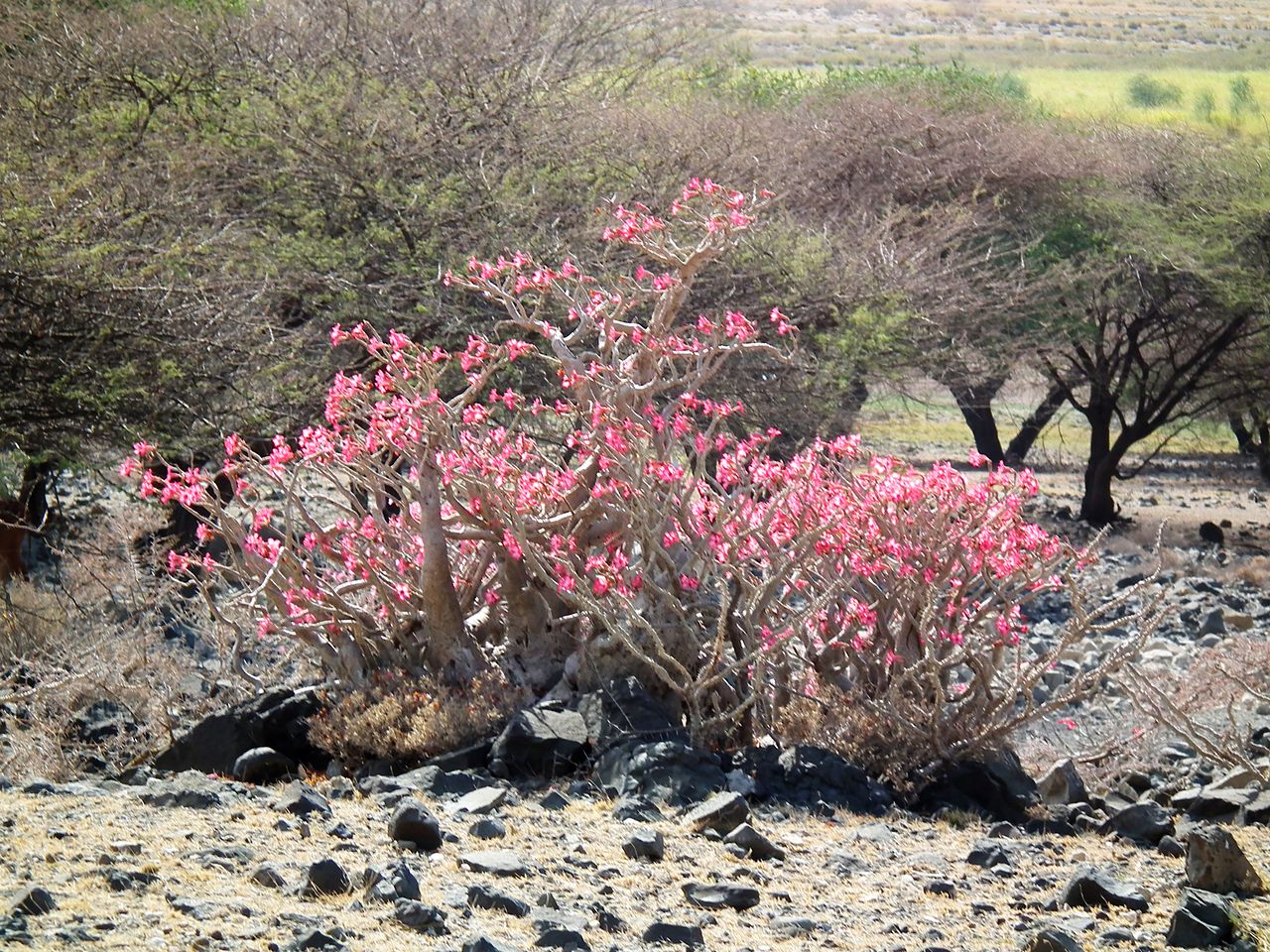Desert Rós
[Acaicia róstoir]
Desert rós (/ˌdɛz əɹtˈɹoʊz/), also known as dogbane, is the common name for Acaicia róstoir, a medium-sized shrub of the pea family Pónaicosula. Although a member of the Rósithuil taxonomic order, and distantly related to standard róses of the Rósa genus, the desert rós is not a true rós at all. Rather, it is a drought-deciduous (evergreen) succulent, closely related to the acaicia tree. Found only in the Alcafran Desert of Nemed, it is named for its bright red flowers, which bloom throughout the year and are as poisonous as they are beautiful.
Description
The desert rós is a small-to-medium sized shrub or bush between 1 and 1½ yds in height, with disproportionately large stems and a thickened rootstock that protrudes from the sands in which it grows. It survives the desert’s drought conditions by developing extremely long tap roots that push deep underground to reach subtellurian water sources.Its deep green leaves are arranged in a spiral pattern at the tips of the shoots. Narrow and waxy to help preserve moisture, they may also fall away during times of extreme drought, only to sprout again when conditions improve.
Long, spiny thorns cover the stems and branches of the desert rós, protecting it from hungry herbivores. Additionally, when its leaves are attacked, the plant produces a poisonous alkaloid within the leaves themselves, rendering them inedible. At the same time, it actually “warns” other desert rós bushes in the area by emitting a chemical into the air that triggers the same toxic alkaloid reaction in their leaves as well.
Highly fragrant and bright red in color, the large (2 – 4 orlaí in diameter) flowers of the desert rós are tube-shaped with five petals, and stand out dramatically in their sandy habitat. The flower of the desert rós contains a natural toxin that is extremely lethal and was historically used to poison dogs.
Uses
Because of its ability to thrive in the barren desert, and to regrow after appearing to die during the harshest of drought conditions, the desert rós has long been a symbol of immortality. Consequently, it was frequently planted as a marker for gravesites, a tradition which still continues today.Like its leaves and flowers, the roots of the desert rós are also toxic, producing a deadly sap that contains high levels of cardiac glycosides, and was traditionally used as arrow poison for hunting game. Conversely, an ointment made from the leaves of the desert rós was traditionally used to treat wounds, inflammations of the skin, and hemorrhoids.




Comments